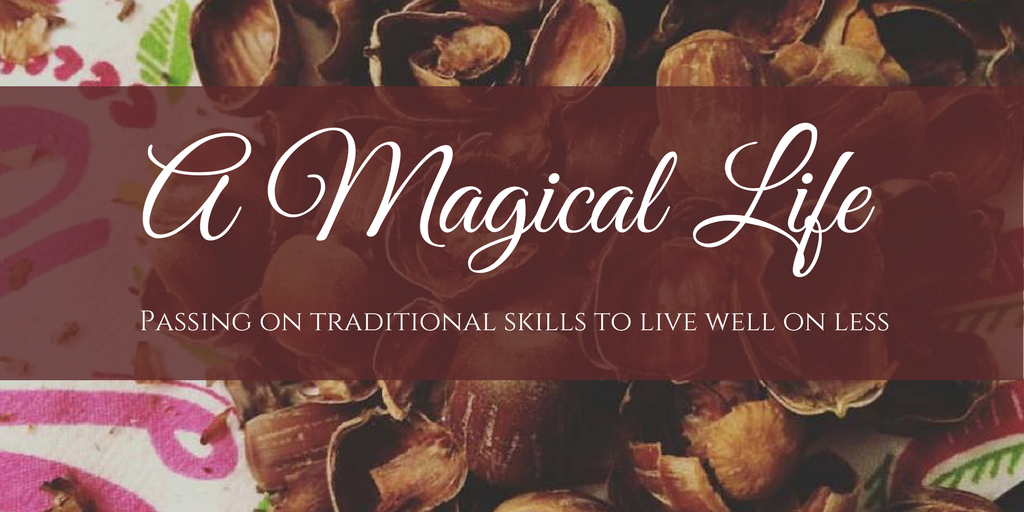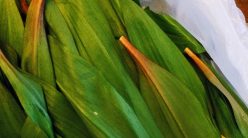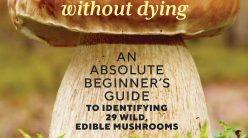With our world and our foods are becoming increasingly contaminated, it’s more important than ever to regularly consume foods that help provide extra nutrients and protect our health.
Wild edibles can be some of the best foods to help do this. Some of the most commonly foraged foods are also the types of plants that are the most beneficial, such as bitter greens, berries, herbs and mushrooms.
For instance, Mother Earth News reports on the value of nettles:
Vitamins and minerals: Nettles are an excellent source of protein. They also contain high amounts of vitamins A, B and C, as well as calcium, magnesium, potassium and zinc.
Arthritis: Nettles have been used for centuries to treat arthritis. When applied to fingers and other affected areas, nettles can reduce arthritic pain—so much so that 85 percent of participants in a study at the University of Plymouth in England reported that the pain relief from applying nettles was significant enough to endure the sting and welts caused by the leaves… Nettles can also be used to treat other types of pain, such as sore muscles.
Allergies: Tired of sniffling and suffering through allergy season? Studies have shown stinging nettles to be effective at combating hay fever. Anti-inflammatory compounds and flavonoids found in this weed reduce the amount of histamine produced in an allergic response, meaning you’ll sneeze and itch a lot less than normal.
Detox: Because stinging nettles are a diuretic, they can be useful in cleansing and detox diets.
In this study, researchers studied the “diuretic, choleretic, anti-inflammatory, anti-oxidative, anti-carcinogenic, analgesic, anti-hyperglycemic, anti-coagulatory and prebiotic effects” of dandelions and noted:
The perennial weed has been known since ancient times for its curative properties and has been utilized for the treatment of various ailments such as dyspepsia, heartburn, spleen and liver complaints, hepatitis and anorexia.
As another example, the Natural Society reports about some of the health benefits of purslane, a “weed” that most people have probably pulled up from the yard:
Purslane has more beneficial Omega 3 fatty acids than many fish oils! The weed also has one of the highest levels of vitamin A among all leafy green vegetables (1320 IU/100 g, provides 44% of RDA). High Vitamin A foods can help protect us from many types of cancers and helps to boost eye health.
Also in purslane are vitamins C, and B-complex including riboflavin, pyridoxine, and niacin, as well as carotenoids, and trace minerals like iron, magnesium, and calcium.
Furthermore, purslane is full of two different types of betalain alkaloid pigments – a reddish beta-cyanis and a yellow beta-xanthins, which are equally potent antioxidants and anti-mutagens.
Eat the Weeds reports on chokecherries:
In fact, Aronia berries have greater antioxidant activity than blueberries and cranberries (five times higher than each) and higher antioxidant activity than pomegranates, strawberries, cherries, even the vaunted goji berry…
One species of Aronia, A. melanocarpa, has been well-investigated. It not only has anthocyanins but a host of potential positive chemicals including blue Malvidin, Caffeic Acid (an anti-oxidant also found in wine) blue Delphinidin, dark red-purple Cyanidin-3-Galactoside, and Epicatechin, an anti-oxidant found in chocolate. We may not be able to pronounce them but they are anti-… anti-bacterial, anti-viral, anti-arterial plaque, anti-cholesterol, anti-cancer, anti-flu, anti-E coli, anti-high blood sugar, anti-herpes, anti-HIV, anti-Crohn’s Disease as well as improving insulin production while protecting the liver and the stomach.
And mullein tea has too many health benefits to list here.
All foraged foods tend to be full of vitamins, minerals and nutrients. That said, some have proven to be especially useful in maintaining and improving our health.
Here’s a list of 50 foraged foods that are especially high in nutrients, have antibiotic and/or antiviral properties, are great for detoxing and are otherwise especially powerful at restoring health.
- Dandelion greens and roots
- Nettle leaves and seeds
- Amaranth leaves and seeds
- Wild asparagus
- Burdock root
- Wild garlic
- Wild onions
- Wild leeks/ramps
- Sheep sorrel
- Milk thistle
- Sorrel/dock
- Chickweed
- Garlic mustard
- Wild fennel
- Sow thistle
- Mallow leaves
- Blueberries
- Blackberries
- Raspberries
- Wild cherries
- Elderberries
- Gooseberries
- Lingonberry/low bush cranberries
- Cranberries
- Chokeberries (Aronias)
- Mulberries
- Crab apples
- Acorns
- Walnuts
- Pecans
- Reishi mushrooms *
- Chaga mushroom tea or tincture *
- Lion’s mane mushrooms *
- Turkey tail mushrooms *
- Morel mushrooms *
- Wood-ear mushrooms *
- Wild mustard
- Wild horseradish
- Echinacea tea
- Chamomile tea
- Red clover tea
- Mullein tea
- Motherwort
- Sweet violet leaves and flowers
- Wild grapes and wild grape leaves
- Seaweed (especially kelp)
- Wild rice
- Sumac
- Cattail pollen
- Maple syrup
These are just some of the thousands of wild edible plants that can improve your health and pack a nutritional punch. I’m sure that most seasoned foragers would have at least a few favorites to add to the list!
For detailed pictures and more information on all of these wild edibles and many more, see my Wild Edibles board on Pinterest.
* When foraging wild mushrooms, it’s especially important to follow safety guidelines. Never eat a wild mushroom if you are not 100% sure of it’s identity and always cook wild mushrooms before eating them. Click here for information on how to safely gather wild edible mushrooms.
Remember to follow commonsense foraging rules for both safety and courtesy. Only gather plants when you are sure of their identities, always obtain permission to forage if you are not on your own land or public lands that allow it, take only what you can use and leave enough to ensure sustainability (other than cases of invasive plants such as garlic mustard, where you’re doing a good deed if you gather as much as you can).
Also keep in mind that people can be allergic to wild plants just as they can be allergic to any other food. Consume a small amount the first time you try a new food, research new wild foods fully before you consume them, and check to see if any foods you’re consuming (wild or not) can interfere with any medications or medical conditions.
Happy foraging!
***







